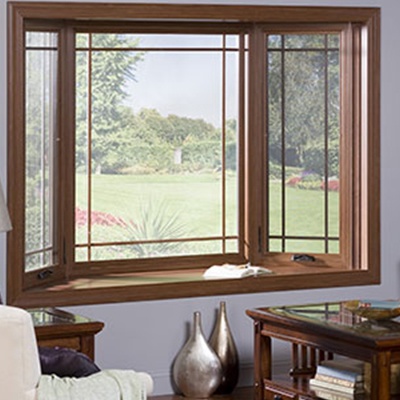Condensation is a sure sign that your home windows have to be replaced.
Windows are a crucial barrier in between the rough, variable weather conditions outside and our tranquility, regular home temperature levels. Home replacement windows tend to have a fifteen to twenty-year lifespan, so fortunately we do not have to consider changing them too often. Yet recognizing when it's time to replace them can be tricky. You could be tempted to try and hold out for another season if you notice the warning signs. However replacing your home windows currently can help you prolong the life of your entire home as well as maintain you and also your family warm all wintertime long. Below are a few signs that your windows are not prepared for the rough winter this year.
Drafty Home
As windows age, they begin shrinking, damaging, and not closing correctly, permitting air from inside your the home of flow out. As a result of this, your COOLING AND HEATING system battles to keep your house at a consistent temperature level and also sends your energy costs escalating. If your home is significantly much more drafty or your electric expenses seem to be going up this fall for no apparent reason, you might want to have your home windows took a look at.
Tough to Lock
We delight in having our windows open when the weather condition is nice, however they should not be open all the moment. During the winter months and when we're not home, your windows ought to be shut in area and locked. Windows with malfunctioning locks is a significant security danger that need to be fixed asap to maintain your family safe. Typically the lock can be fixed reasonably, but if the window is having trouble staying open or shut or is leaking air, it may be best to simply set up a new one.
Condensation Forming
The most significant indication that you require new windows is when condensation starts to base on the inside of your home window when it is shut and locked. This is indicative of a most likely incurable imperfection and also must be resolved immediately to avoid the potential development of mold and mildew in the framework, which could infect other locations of your home and also trigger serious damages when left neglected.
Have you almost had it with your old, drafty windows?
Is this the year you've made a decision to lastly change your home windows? Changing your windows with new ones comes with lots of advantages, consisting of an energy effectiveness increase, better ventilation, and also better quality of light in your house. The National Fenestration Ranking Council accredits as well as identifies windows (along with doors and skylights) on their performance as well as energy performance. When you're looking for brand-new home windows you'll see these ratings on the NFRC label. In this week's blog, we'll discuss how you can read this tag making certain you're making a notified decision on your new windows.
Warmth Gain and also Loss
The initial 3 properties on the tag relate to exactly how the home window does with regard to heat gain and loss. Windows gain as well as lose heat in three means:
Straight transmission with the glass.
Radiation of warmth from the sunlight into your house, and also away from the house from objects in the house.
Air leakage via as well as around the home window.
U-factor
This is "The rate at which a home window, door, or skylight performs non-solar warm circulation." The takeaway below is "The reduced the U-factor, the much more energy-efficient the home window, door, or skylight."

Solar Warm Gain Coefficient
The SHGC informs us what does it cost? radiation is confessed via the home window and launched as warmth in the residence. The reduced the number, the less warm is transferred. Nevertheless, this doesn't always suggest you desire a low SHGC. For example, because a greater SGHC indicates the window permits extra warm in, you can permit a lot more solar heat inside in the winter, which can minimize your heating demands. In this case, the environment you live in will certainly play a major factor in picking an SHGC score.
Air Leakage
This quantifies what does it cost? air the window lets in about a particular stress difference throughout it. The lower the score, the less air leak.
Sunshine Transmittance
The next 2 rankings measure click here just how much light a home window allows right into your residence.
Noticeable Transmittance (VT).
This number between 0 and 1 actions what portion of the range of noticeable light the window lets through. The higher the portion, the more light the window will allow. If you want to use daylighting in your home, you'll want a higher portion. If you intend to decrease interior glow, you might want a lower portion.
Light-to-Solar Gain.
This number is the ratio between the SHGC as well as the VT. "The higher the number, the more light transferred without including excessive amounts of warm.".